Supermarine SPITFIRE LF Mk IX
MK471 (code SK-N)
Maroué (22)
(contributors : Jean-Michel Martin, Pascal Lebigot - ABSA 39-45)

© F3V Factory
Pilot :
Pilot Officer Donald MOFFAT-WILSON
killed on 12th June 1944 at Maroué (22)
No 165 SQN, Royal Air Force
Grave XVIII. F. 4. - Bayeux War Cemetery.

Photo © Family MOFFAT-WILSON
THE STORY
The 12th of June 1944 in Maroue, village in Cotes d'Armor, county in Brittany : crash of Spitfire flown by Donald MOFFAT WILSON, Royal Air Force pilot.
At 9 am, some aircrafts took off from Predannack airport, in British Cornwall. All these pilots belung to 165th Squadron RAF. Their mission today was to destroy every aircraft on French territory. It was six days after DDAY in Normandy and Germans tried to improve their defence front, which meant a lot of movements of their troops towards Normandy.
Pilots flew the famous Supermarine Spitfire Mk IX. It was fitted with two 20mm cannon and four 7,65 mm Browning machine guns. The firing power was important compared to the ennemy. After having crossed the Channel, the squadron flew over the eastern part of Cotes d'Armor county to fight ennemy aircrats (the former name at this period was "Cotes du nord").
At 11am, the squadron reached Lamballe region (heavily controlled by the Germans because of Paris-Brest railway) by the north side. Suddenly, they saw German troops curiously moving from east to west. For which reason, nobody knew ? One thing was certain, the troop has been traveling for several hours, as it has been reported in different places. It was made up of several horse-drawn carts and a lot of soldiers, well armed. The German column stretched out in the meanders of the road which crossed the "Truite" river towards Saint Brieuc. The advanced soldiers were already at the top of the hill near a place called "Le Pélican". The aircrafts group leader gave the order to attack. One of them was a 21-year-old Irish pilot Donald Moffat-Wilson, from Dublin. He then attacked into this hell. He was flying too low and could'nt see the power line that stood in front of him. A witness reported that the tail of his aircraft touched the electrical wires - the wires did not break - and the rear struck the post, destroying it at the top (wooden post). Unbalanced, the aircraft kept on flying but it was over, although the pilot attempted to increase the engine power. Nothing helped, he was unbalanced again. The power could'nt prevent the crash and it hit the ridge of the roof of the farm located in the valley (nowadays destroyed to make a highway). Then everything went very quickly. The pilot was no longer controlling the aircraft, which crossed the road towards Maroué, then dived at very high speed into a small field, digging a hole two meters deep (hole filled a few years ago by the farmer who did not understand why it was there).
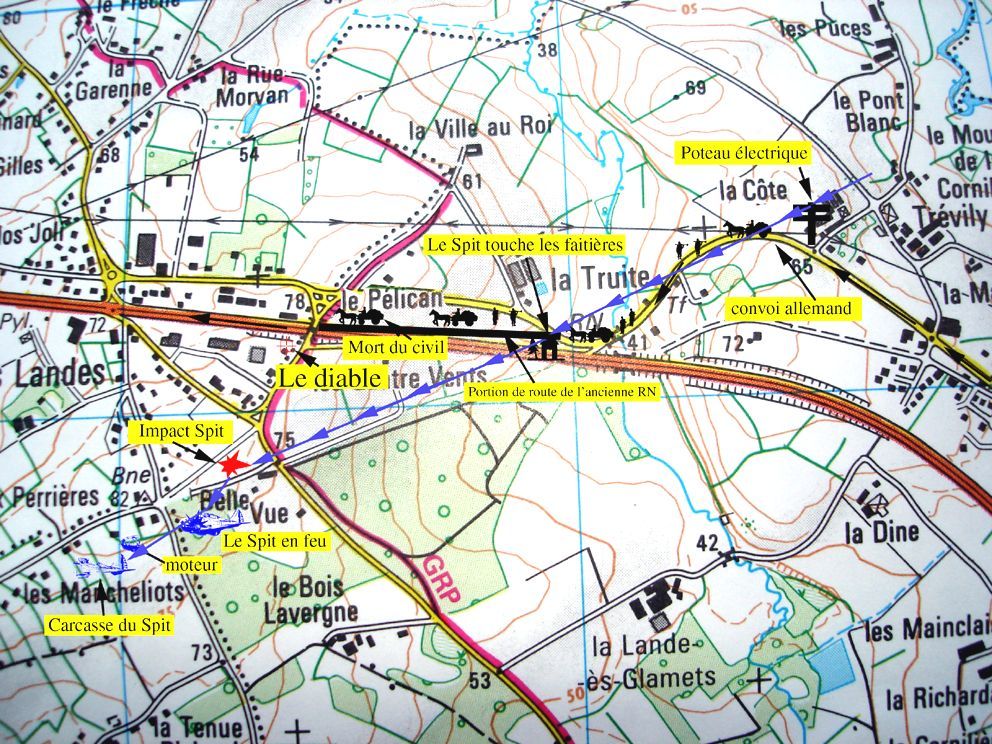
Note the course of the Spitfire, since the loss of a wing after having hung the ridge of the roof of a house.
After touching the ground, he glided almost 1 mile on its belly
This contact with the ground did not really slow down the aircraft, which stroke the trees in the small wood called the green wood, and, entering this grove, it tore off everything in its way. The high speed broke the engine and threw it in a nearby field, which after that wood, crossed the road to Meslin. The unfortunate pilot died in the crash of his aircraft. The Germans quickly rushed on site and stopped the population who tried to extinguish the fire which, above all, could spread to the all wood. By chance, it didn't happen.
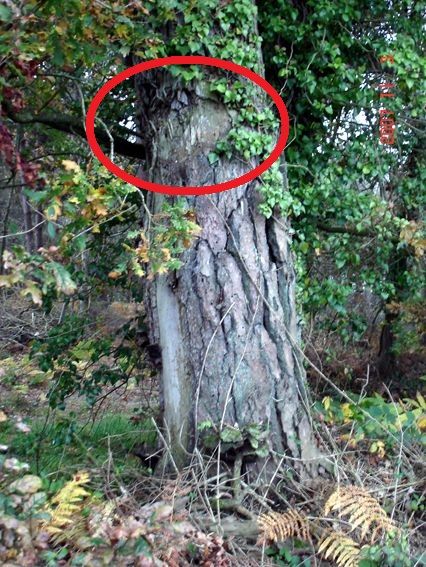
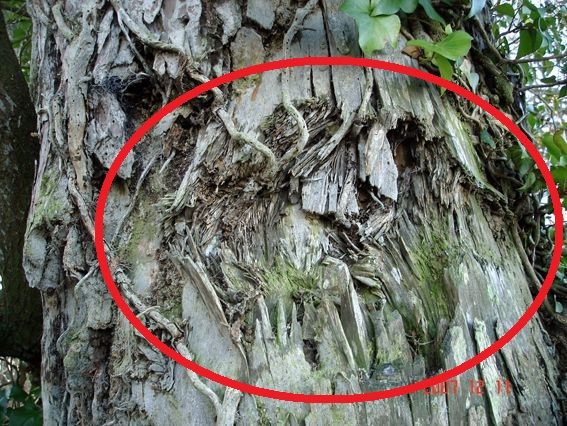
The impact of the wing on a pine on the embankment at the edge
of the "Bois Vert en Maroué", 64 years after the crash.
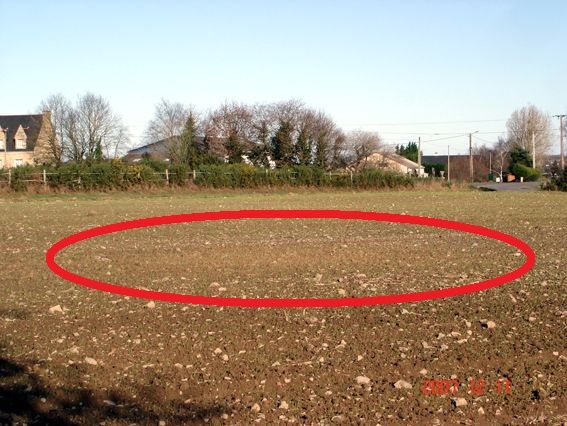
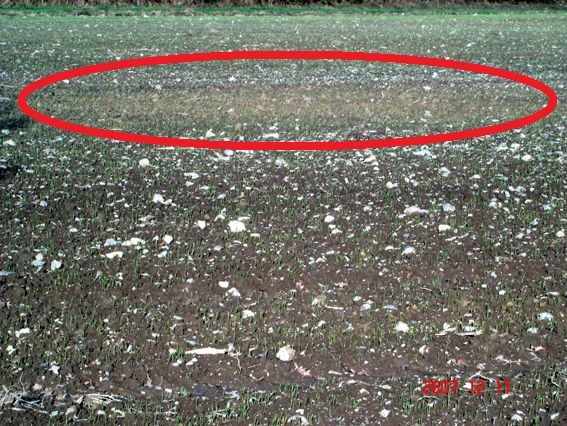
The hole filled with a color difference.

An impact on another tree.

From the wood, the V shape in the embankment caused by the engine,
crossing the Meslin road and falling into the field 70 meters below.
A witness reported the huge smoke rising in the sky. The remains of the pilot, at the request of the occupants, were buried in the neighboring farm in the village of "Bellevue" near the well. The rector of Maroué, the "Abbé Blanchard", organized a funeral ceremony in which the neighboring population participated. Every following day, flowers were displayed on the grave and every day the Germans came to remove them and throw them on the farmyard manure heap. Angry, they threatened the population wether it happened again. After one year buried there, Moffat-Wilson was transferred to the Bayeux military cemetery in Calvados. Curiously, his grave is located in the extreme southwest, in the corner, just like it was facing Brittany. It is necessary to report the continuation of this attack which was particularly deadly. Many Germans died there. A 68-year-old French man, returning from a family ceremony in Rennes, who was tired after a long walk, asked the Germans for the possibility of sitting in the back of one of their carts. It was a bad idea and he died during the attack. This man was going to Binic. Many horses were killed. The Germans asked the population for help in burying them in a nearby quarry. A witness related an anecdote: on the mound of the "Pelican", at the top of the hill, a carpenter at the beginning of the war had left a "devil" in a field, a kind of tree trunk transport system that horses were towing. From the sky, our pilots mistook the system for a cannon and at each pass fired it ; in the end, it collapsed. At the beginning of our research, the pilot was identified as Canadian. We realized during our investigations that this term Canadian was attributed to all Allied pilots in the language of the population. A witness also reported that this troop, traumatized by this attack, took three days to recover. This crash can be quantified in terms of distance: it was spread over approximately 900 m. Thanks to everyone who gave their testimony so that the memory of the sacrifice of Donald MOFFAT-WILSON, who died like many others for democracy and our dear FREEDOM, continues.
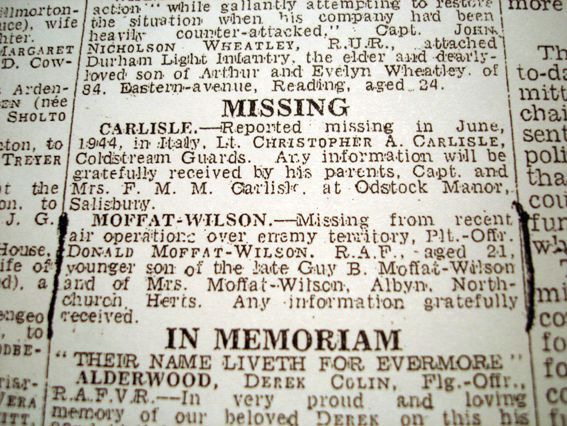
Article from DAILY TELEGRAPH and MORNING POST dated Wednesday July 5, 1944.
Jean Michel MARTIN and Pascal LEBIGOT. "Association Bretonne du Souvenir Aérien 39-45". 26th November 2008.
Documents source : Air Historical Branch (RAF) Letter of 5 December 2007
DONALD MOFFAT-WILSON
Donald Moffat Wilson was born February 14, 1923. He was the last child in a family of five children: Patrick, his brother, was born in 1916; her sister Joan was born in 1917 and Margaret and Elizabeth were twin sisters.
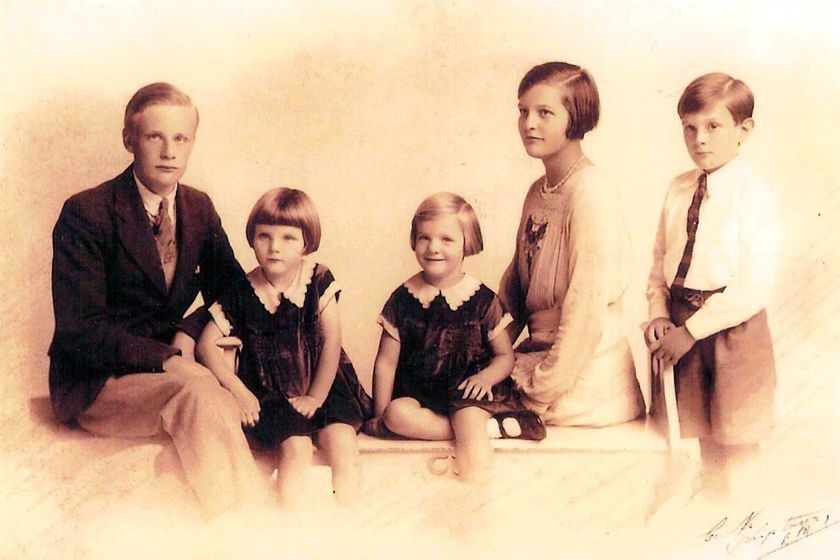
From left to right : Patrick, the two little twins Elizabeth and Margareth, Joan and Donald who was 8 years old at that time.
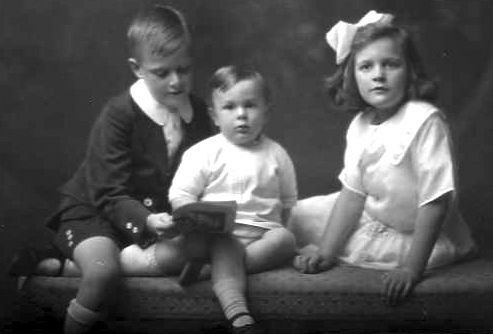
Patrick, Donald and Joan
The Wilson family is an old family with Irish origins. The grandfather and his wife, Edith Prenter, were farmers settled in the North of Ireland at Groomsport. This is where Guy Bargo Wilson, the father of the family, was born ; Patrick, on May 14, 1916 and Joan, in 1917, were also born in Groomsport. A few years later, the grandfather moved to Dublin to run a currency exchange agency. He asked his son Guy to come and help him. Guy and Edith moved to Dublin in 1919. In 1924, Donald's father changed his name or at least added his father's first name, Moffat. There were too many Wilson in the business world in Dublin at that time. The grandfather Moffat was a chess champion, ranked fifth in Ireland.
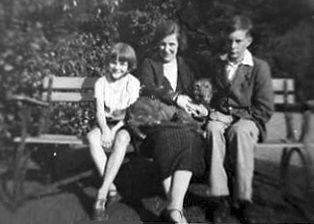
Elisabeth (Beth), Edith and Donald.
Donald was a high school student at a private school at Sherborne School in Dorset, England. His brother, Patrick, was also a high school student, but at another private school in England. No doubt that the family fortune was affected during the 'crash' of 1929, and the family moved to England in 1940.
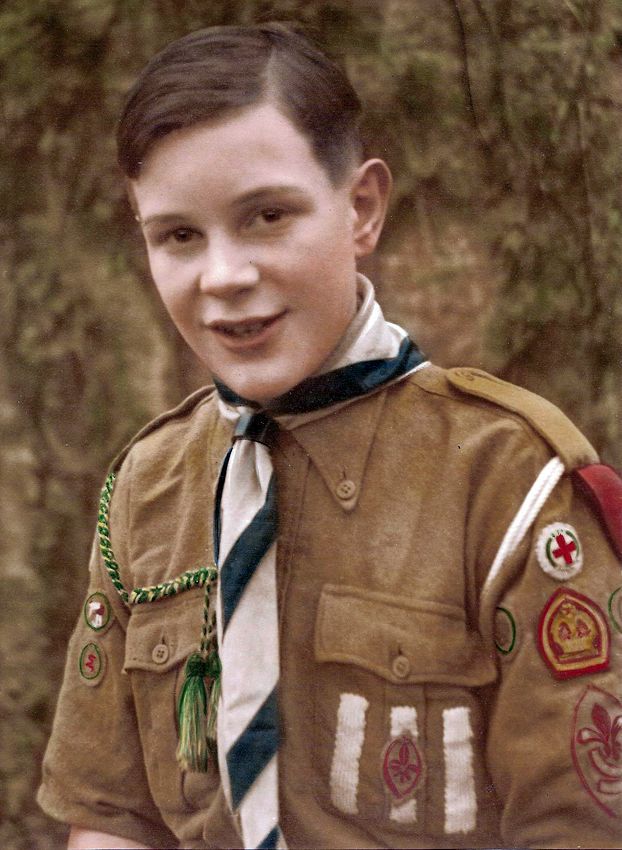
Donald Moffat Wilson at 15. He has just received his scout badge (on his left arm).
Joan got married to Robert Bonsall Pike in 1937 or 1938. At that time, Guy, the father, registered as a private in the English army, while Donald was probably at Sandhurst, training as a pilot. Unfortunately, his certificates from this period are missing. Guy died on June 6, 1944, at the age of 55, after a heart problem. He was a reservist supporting the war effort in England, at the rank of "private" in the Royal Army Service Corps. He was buried in Ipswich Cemetery, England. Donald had obtained permission to attend his father's funeral. It was on his return that he was sent on his last mission, at a time when he was very tired, probably overwhelmed by the death of his father.
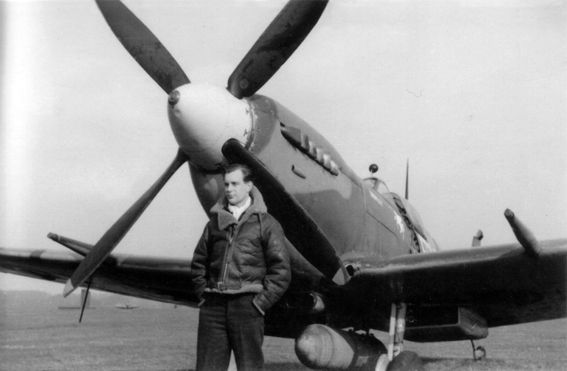
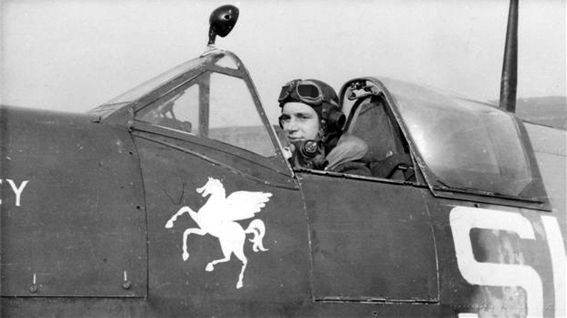
Two beautiful photos of Donald in front and in his Spitfire Mark IX.
Note the emblem, Pegasus ; is this a personal drawing of Donald?
Patrick, the second son, also a Pilot Officer, was killed during an exercise in England on December 3, 1944, six months after his brother, he was 28 years old. He is buried in Wolverhampton Borough Cemetery.
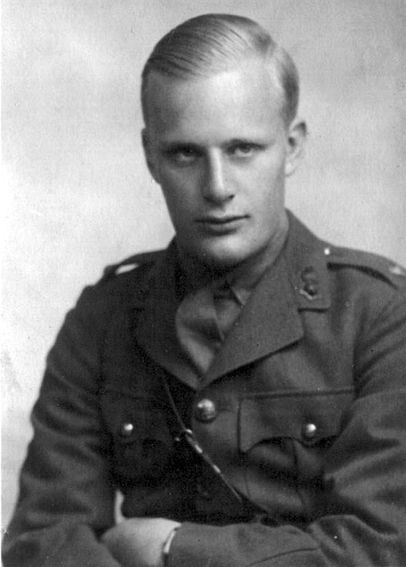
Patrick Moffat-Wilson
In 1946, Edith, the mother, returned to live in Ireland with her twins, Margaret and Elizabeth. Margaret was the last of the Moffat-Wilson family still alive in 2008, when she lived with her husband George, in a nursing home in Dublin. We owe this biography to Donald's nephews and nieces, after almost two years of searching to find the Moffat-Wilson family in Ireland. Several children and grandchildren were born from the three Moffat-Wilson daughters, some living in Ireland or England, others in New Zealand and Canada. I would like to thank them for having opened their family archives to us, which allowed us to pay a last tribute to our aviator Donald who died in Maroué, without forgetting the brother and their father, a family hardly hit by the war.
Jean-Michel Martin
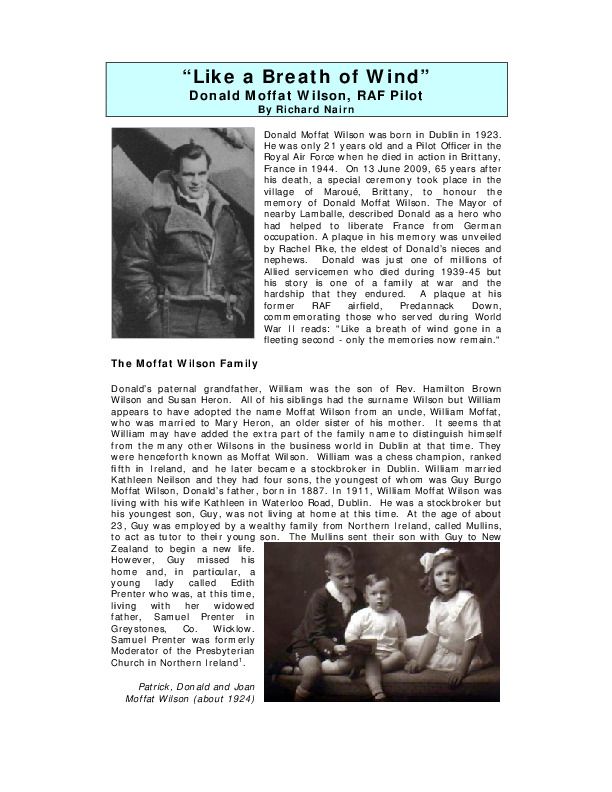
Read the biography of Donald MOFFAT-WILSON by Richard Nairn (link here below)
Like a breath of wind 11 10 09
IN MEMORIAM
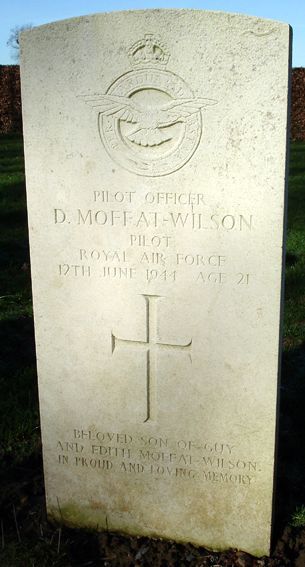
Grave of Donald MOFFAT-WILSON
Grave XVIII.F.4. BAYEUX WAR CEMETERY
COMMEMORATIONS
♦ Saturday 13th June, 2009 - Lamballe - Maroué (22)
Great moment of emotion for the members of the "Association Bretonne du Souvenir Aérien 39-45" on this Saturday, June 13, 2009 in Maroué, county of Lamballe (22), during the commemoration of the death of this young Pilot Officer of the Royal Air Force, Donald MOFFAT WILSON ; he was 21. After almost two years of research and contact, we were together to remember. The Mayor of LAMBALLE and Madam the Mayor of Maroué, organized this ceremony where we the local population, witnesses and various organizations of veterans of the district, and of course the members of the family from Ireland, England and New Zealand.
We will never forget this moment, when we met women and men united by Cordiality.
Thanks everyone.
We wish PEACE and democracy to endure.
Jean Michel MARTIN

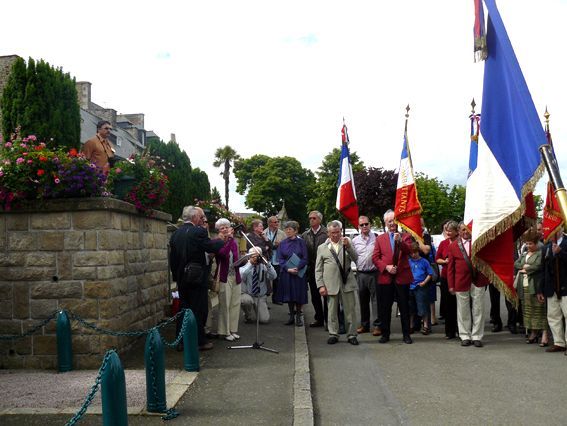
Opening speech by the interpreter
Photo © Jean-Michel Martin
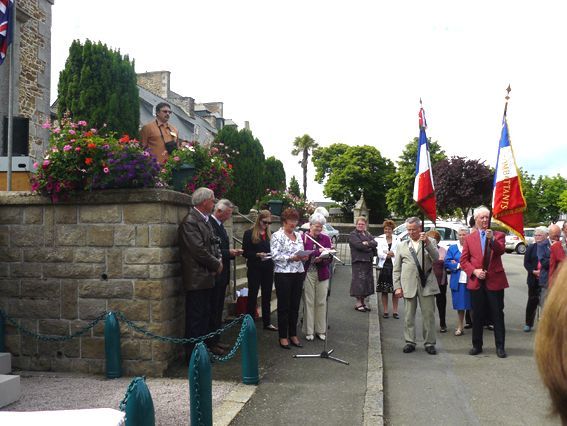
Speech by Madam the Mayor of Maroué
Photo © Jean-Michel Martin
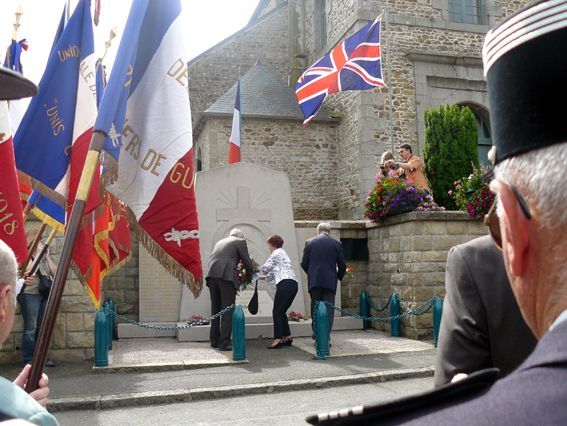
Flower laying at war memorials by the mayor of Lamballe, Madam the mayor of Maroué
and Jean Noël Rincel, from ABSA 39-45
Photo © Jean-Michel Martin
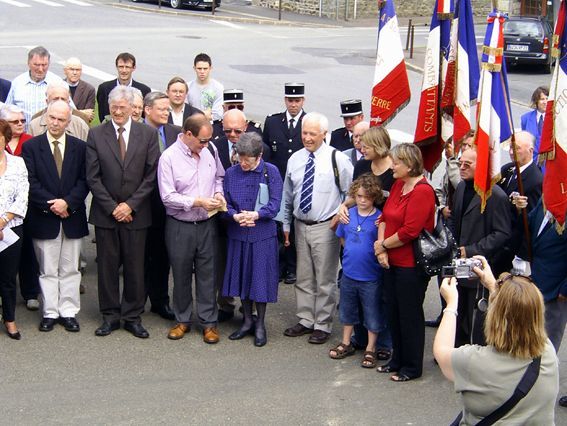
The nephews and nieces receive from Mr. Besrechel, witness of the crash,
a piece of Donald Moffat-Wilson's parachute
Photo © Jean-Michel Martin
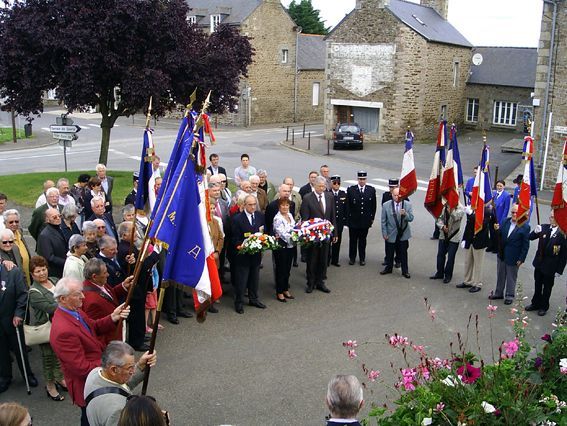
The ceremony
Photo © Jean-Michel Martin
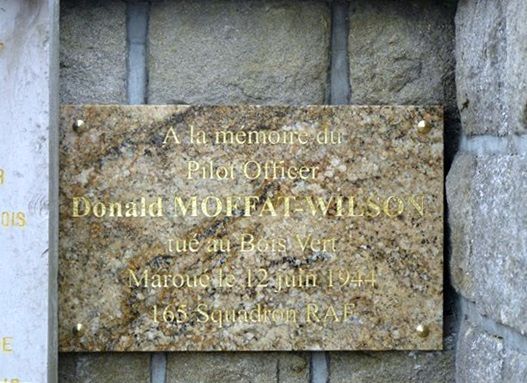
The commemorative plaque
Photo © Jean-Michel Martin
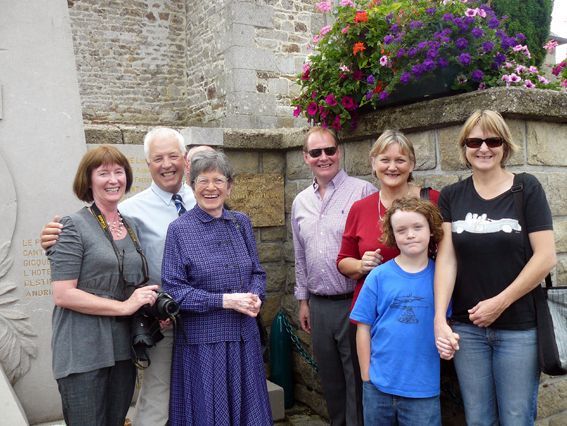
Donald Moffat-Wilson's family
Photo © Jean-Michel Martin
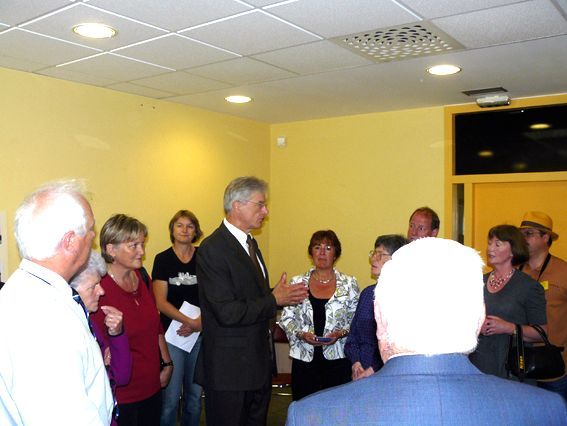
A word from the Mayor at the 'vin d'honneur'
Photo © Jean-Michel Martin
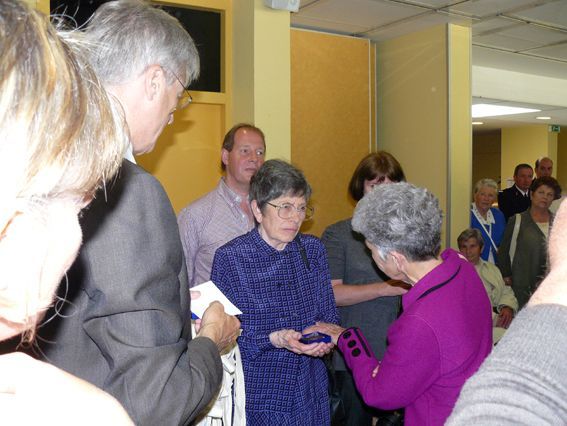
Presentation of the city medal to the pilot's niece
Photo © Jean-Michel Martin
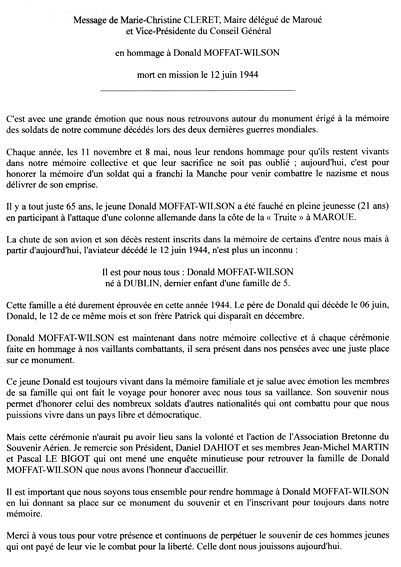
The speech of Madam the Mayor of Maroué
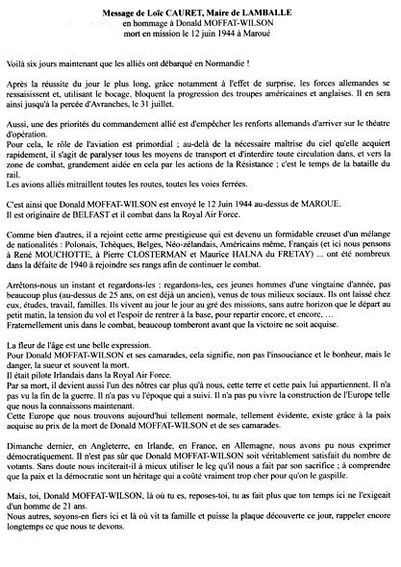
The speech of the Mayor of Lamballe
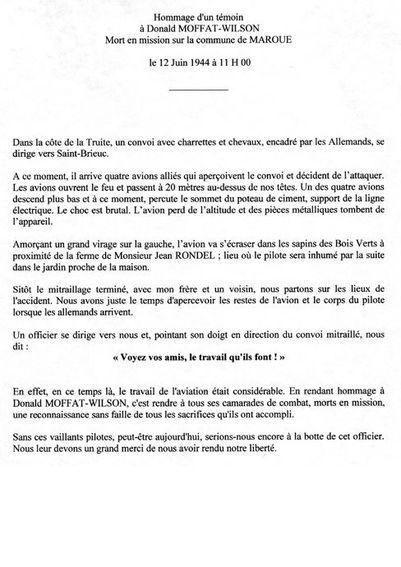
The story of a witness
IN THE PRESS !
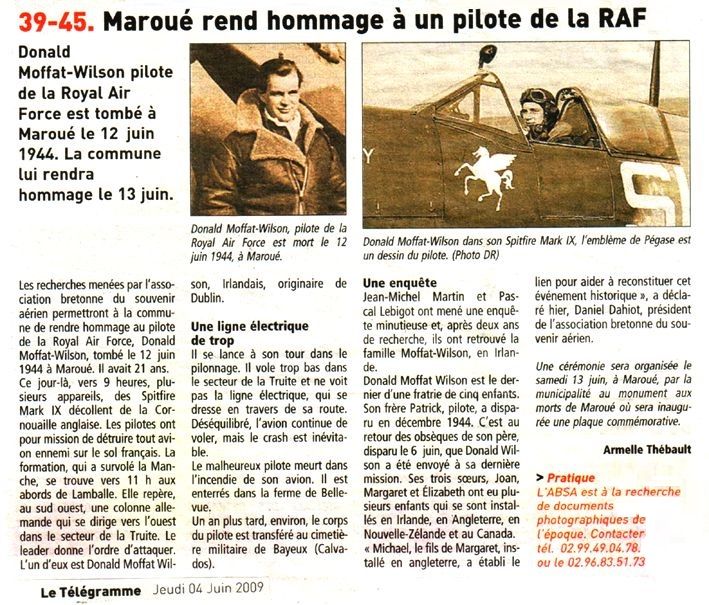
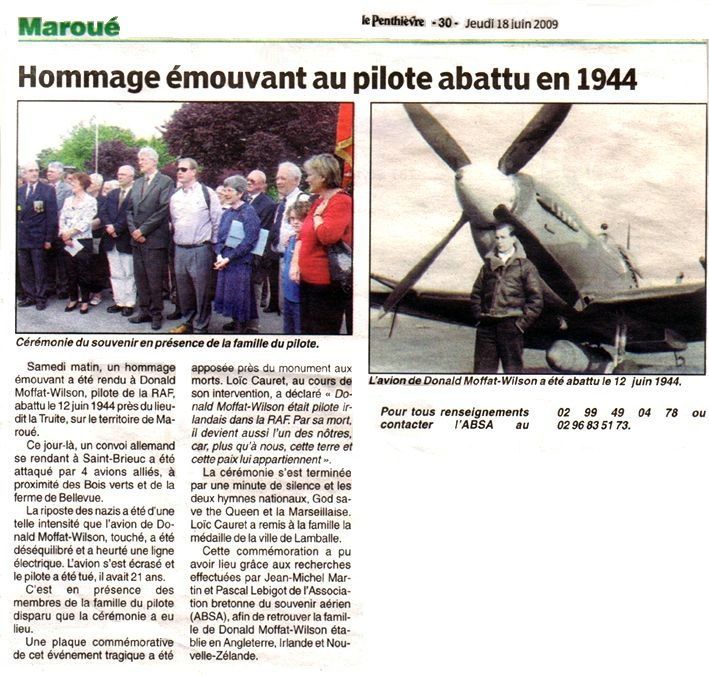
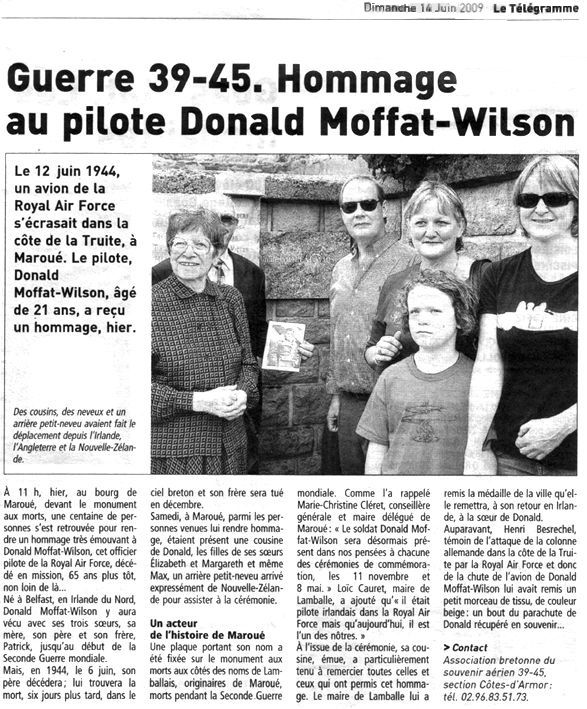
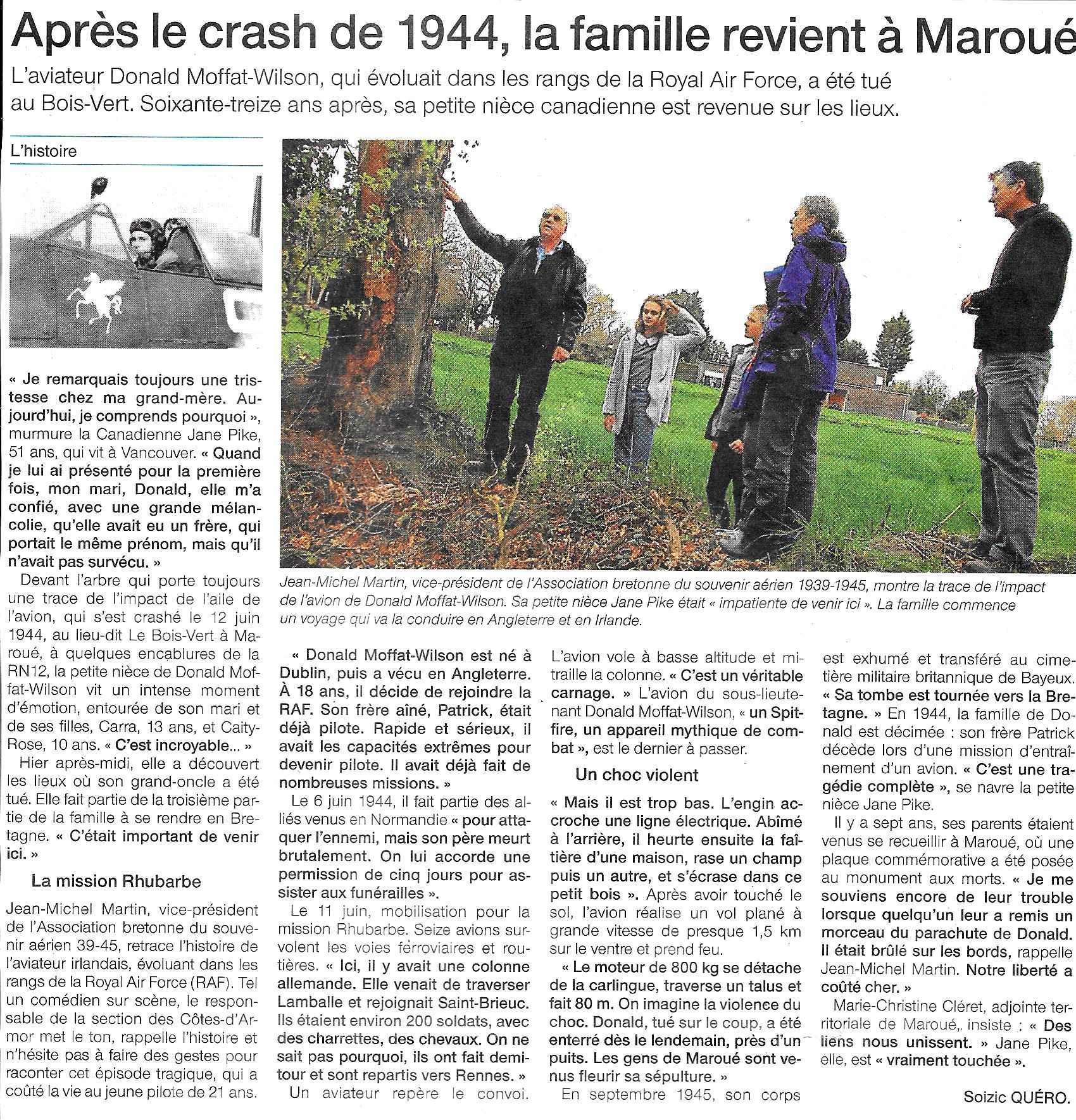
Ajouter un commentaire